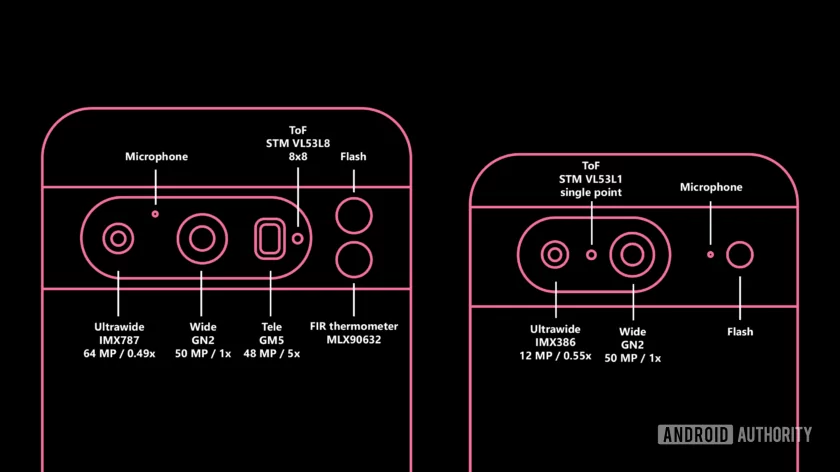Google Pixel 7 cameras are among the best camera phones to buy and its successor Pixel 8 pro is just months away from the official launch, tech community starts to get potential spec details.
A leak revealed by Android Authority stated both Pixel 8 smartphones will use Samsung’s ISOCELL GN2 sensor, which is 35% larger than the previous GN1 sensor. The improved sensor will help capture better low-light imaging and dynamic range by increasing light intake. Further, the sensor will support Staggeted HDR for a long and short exposure shots.
This is not the only camera upgrade that Google Pixel 8 will feature. The upcoming Google Pixel 8 Pro will use a 60MP Sony IMX787 sensor to take ultrawide shots. Previous models were using a 12MP Sony IMX386 sensor to capture ultrawide shots, the upgrade will help Pixel to drastically improve the quality of its ultrawide camera, the only camera field it lags behind. The Double size sensor is a huge upgrade and Google has also made the lens marginally wider.

In addition to hardware upgrades, Google has also incorporated new camera functionalities into its upcoming device. One notable feature is the “Adaptive torch,” which intelligently adjusts the LED flash intensity based on the scene, preventing overexposure in low-light photographs. Another addition is Segmentation AWB, where the Pixel 8 utilizes artificial intelligence to analyze and categorize different elements within a photo, allowing for selective processing tailored to each specific part.
One more notable feature of the leaked Pixel 8 Pro is the inclusion of an FIR thermometer sensor. However, it is important to clarify any misconceptions surrounding its capabilities. Contrary to speculation, it is not a full thermal camera intended for photography purposes.
The specific sensor employed is the Melexis MLX90632, primarily designed for accurate non-contact temperature measurements, particularly for measuring body temperature. It does not function as a camera or possess any other functionalities beyond temperature measurement. Google has chosen to incorporate this relatively costly feature into its device, which some may perceive as a novelty addition, reminiscent of previous instances such as the Motion Sense feature.
